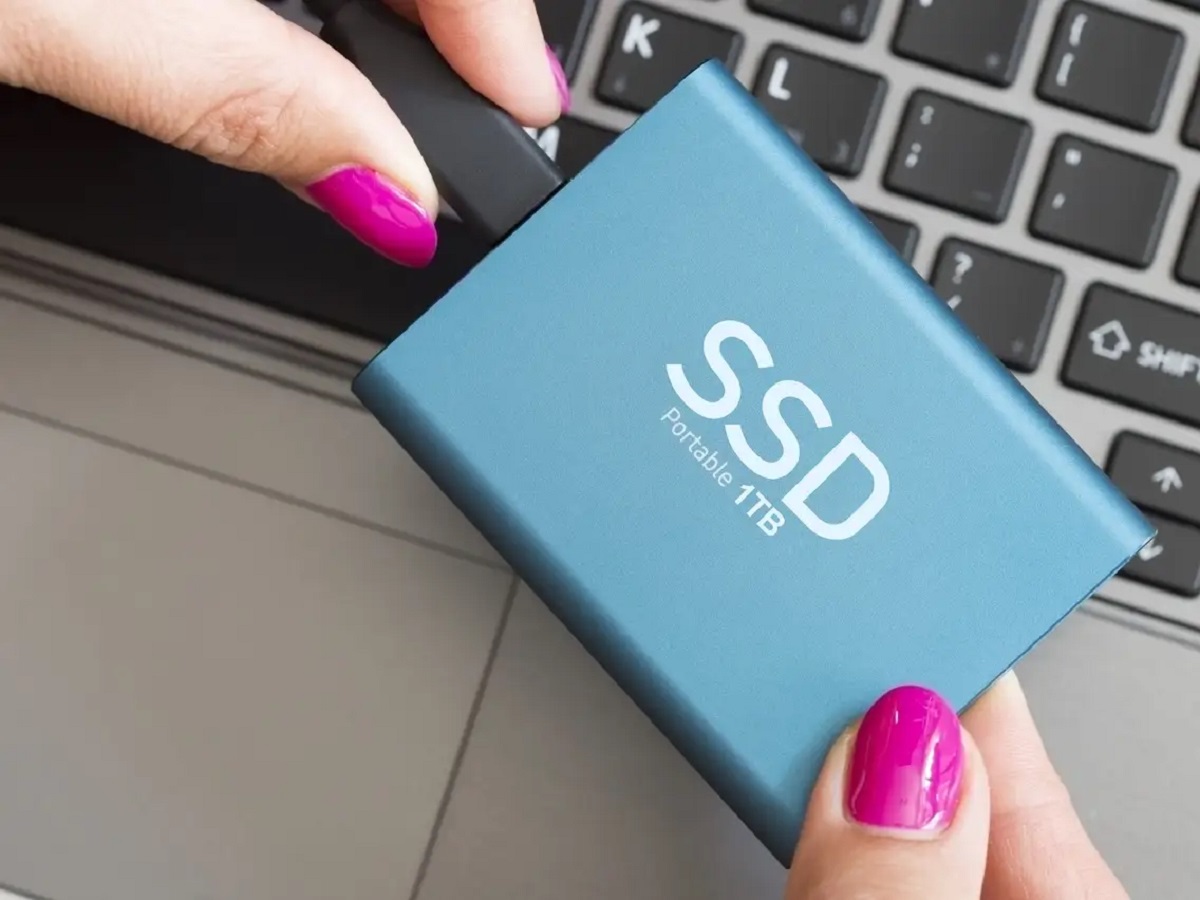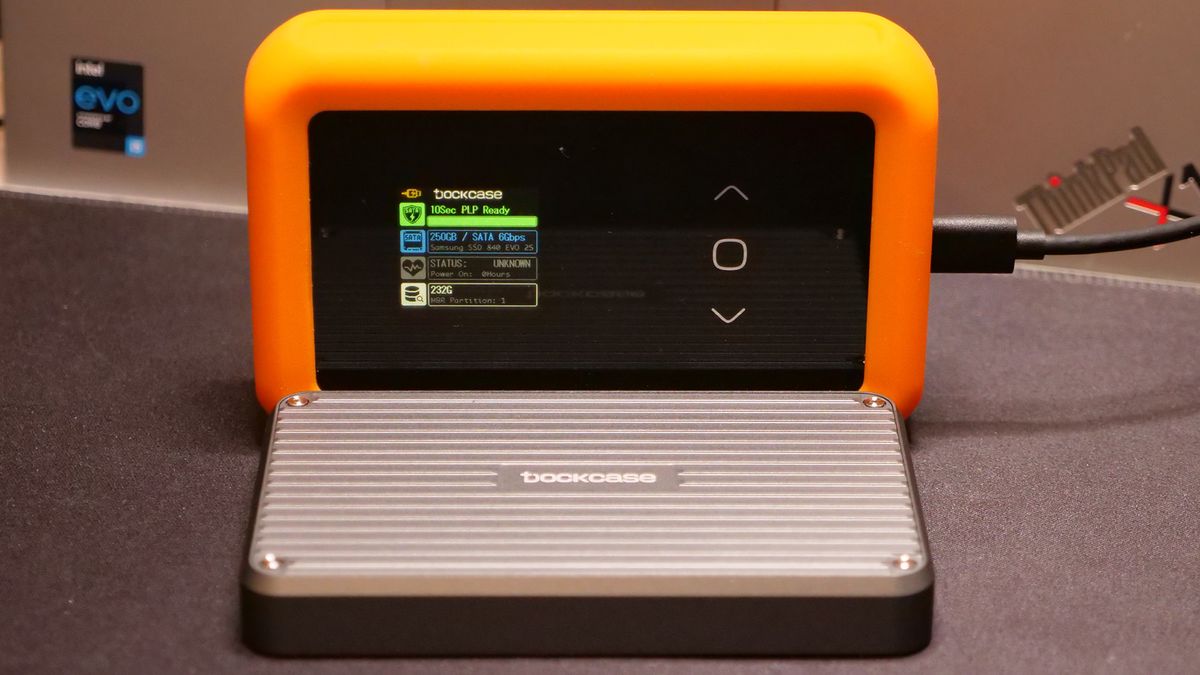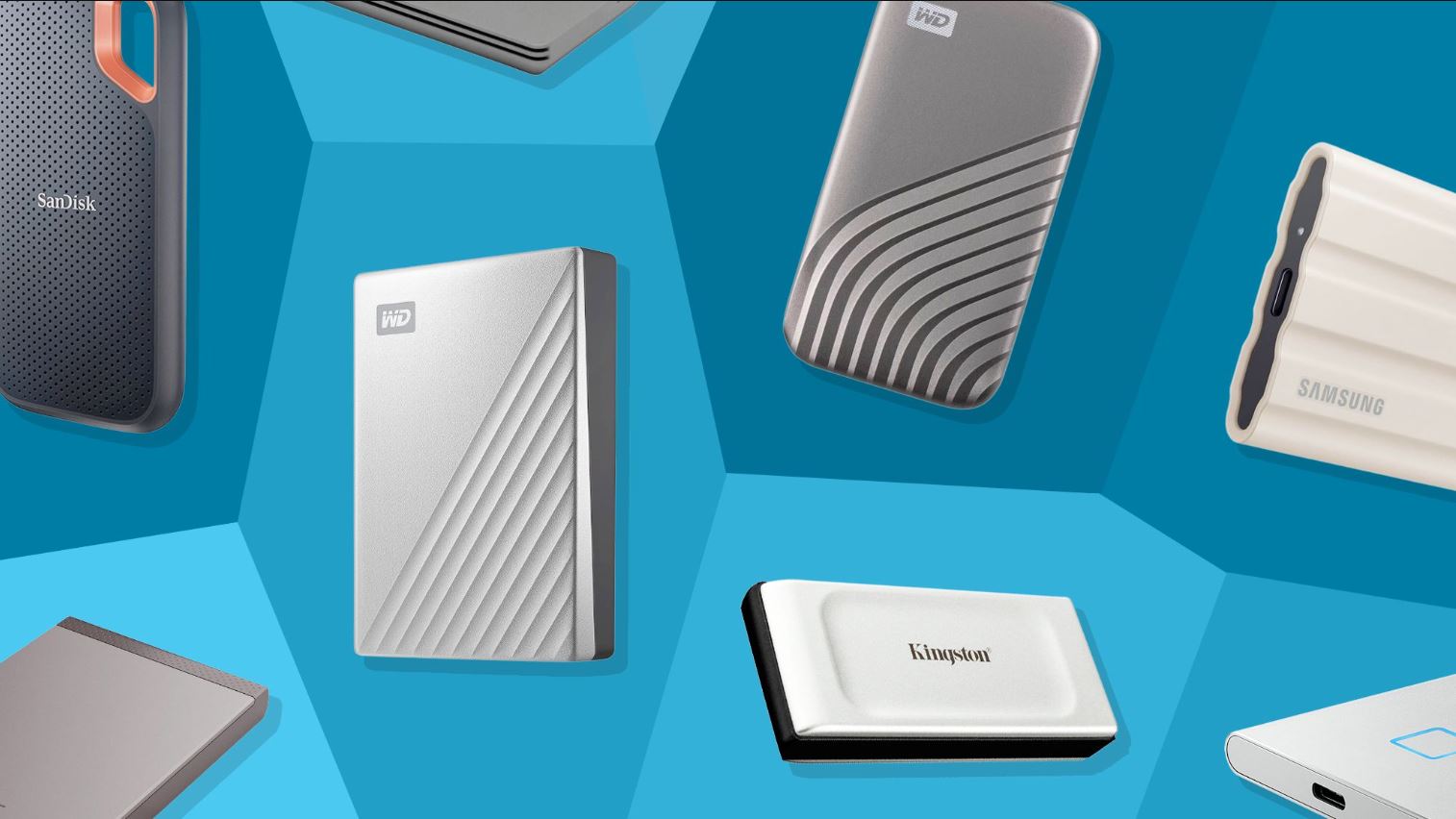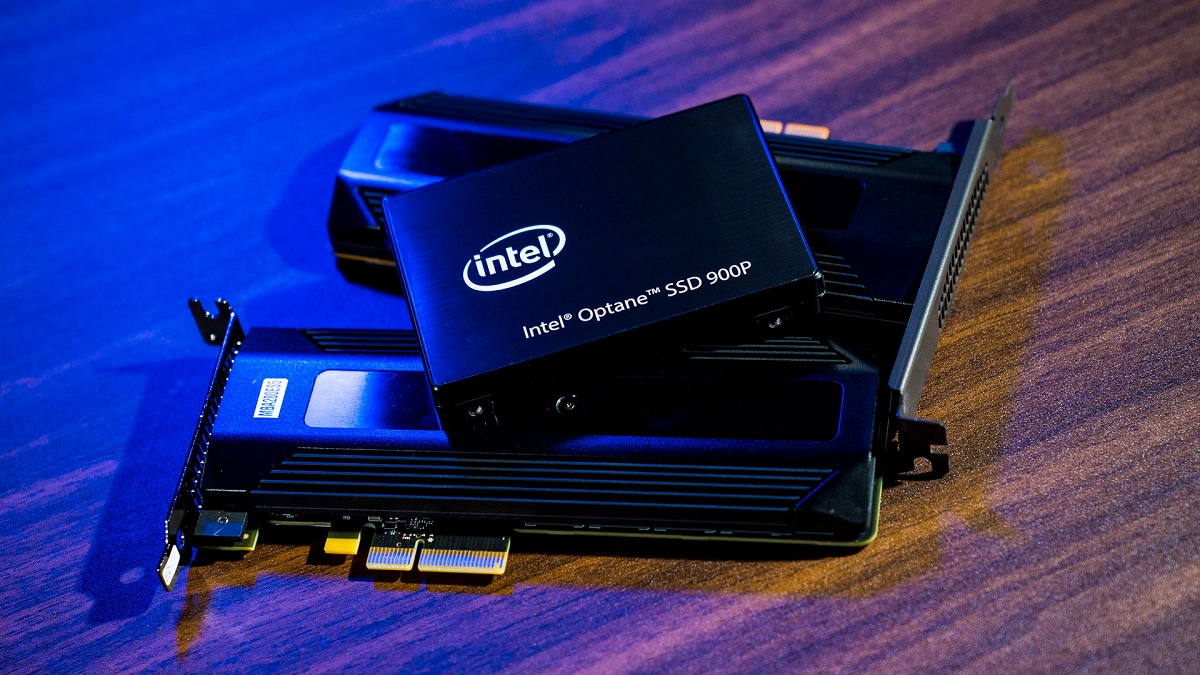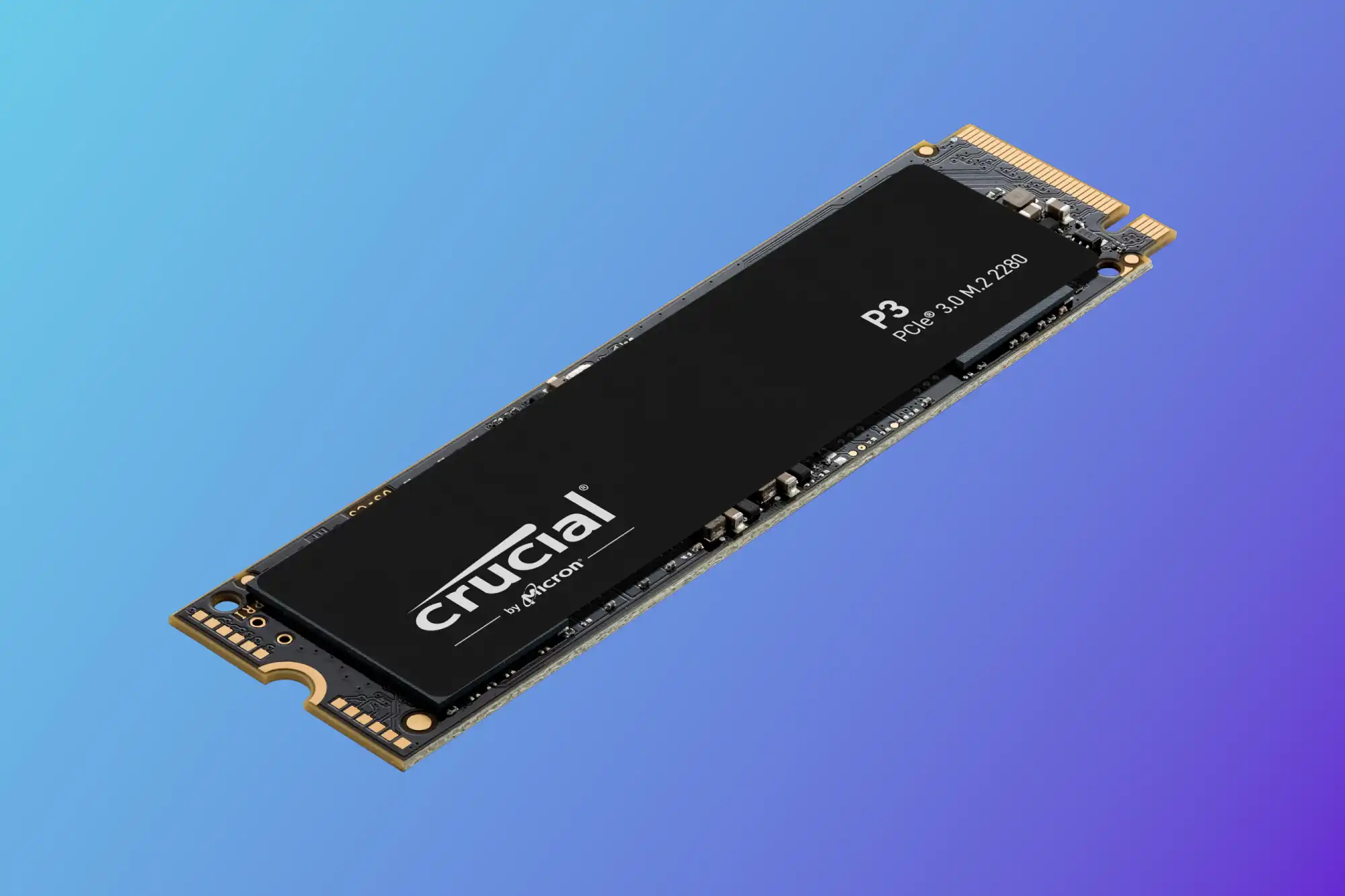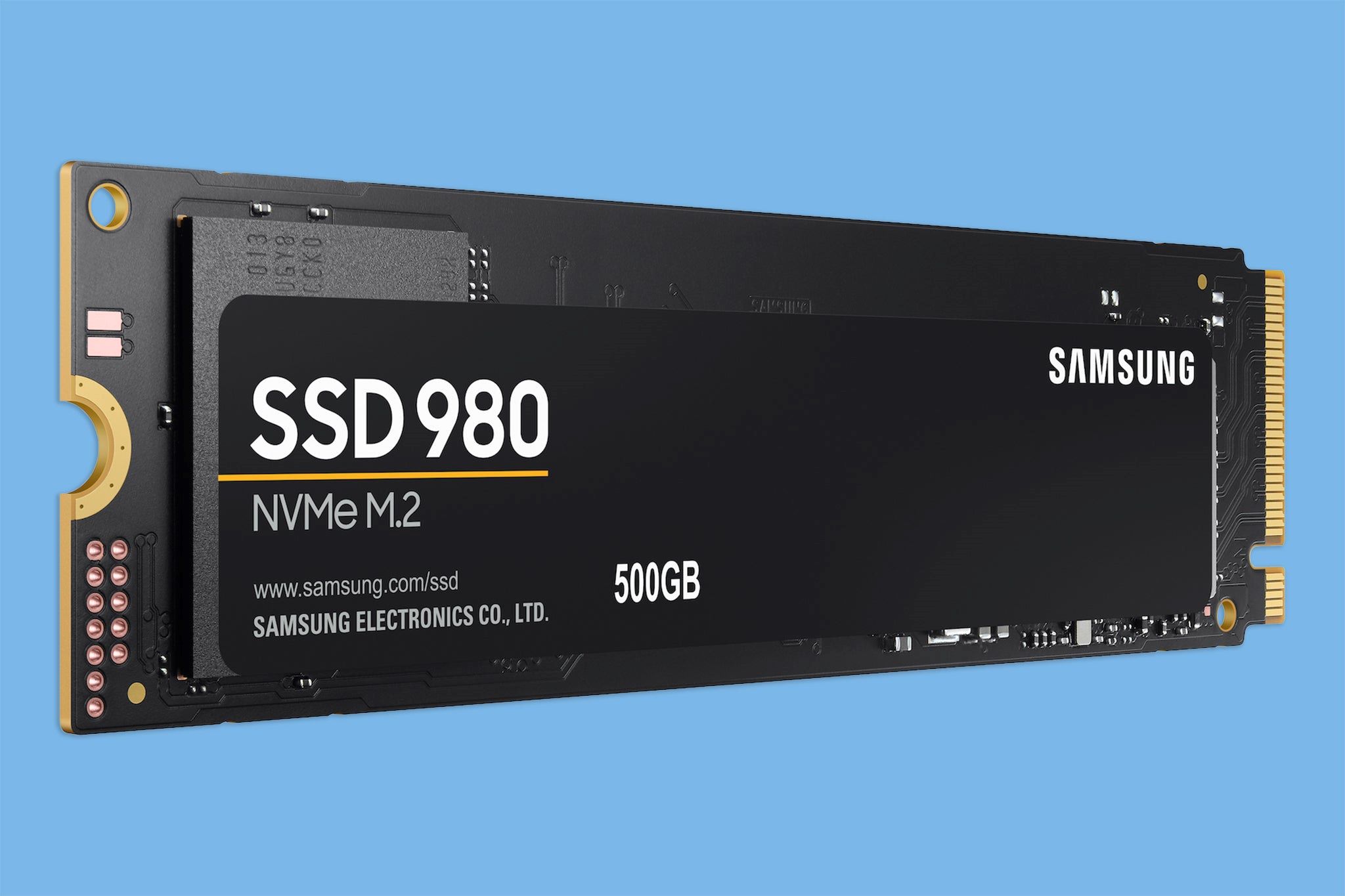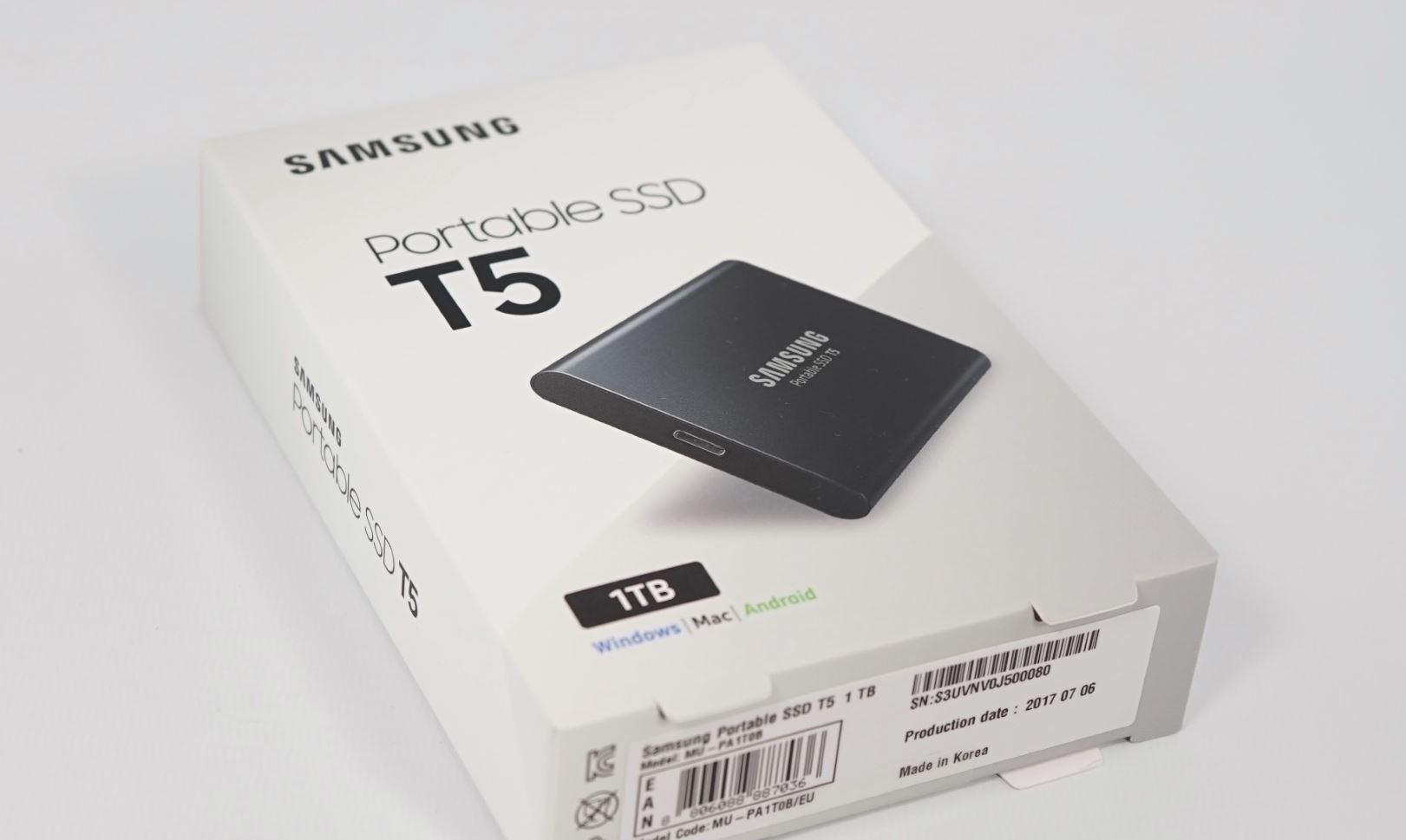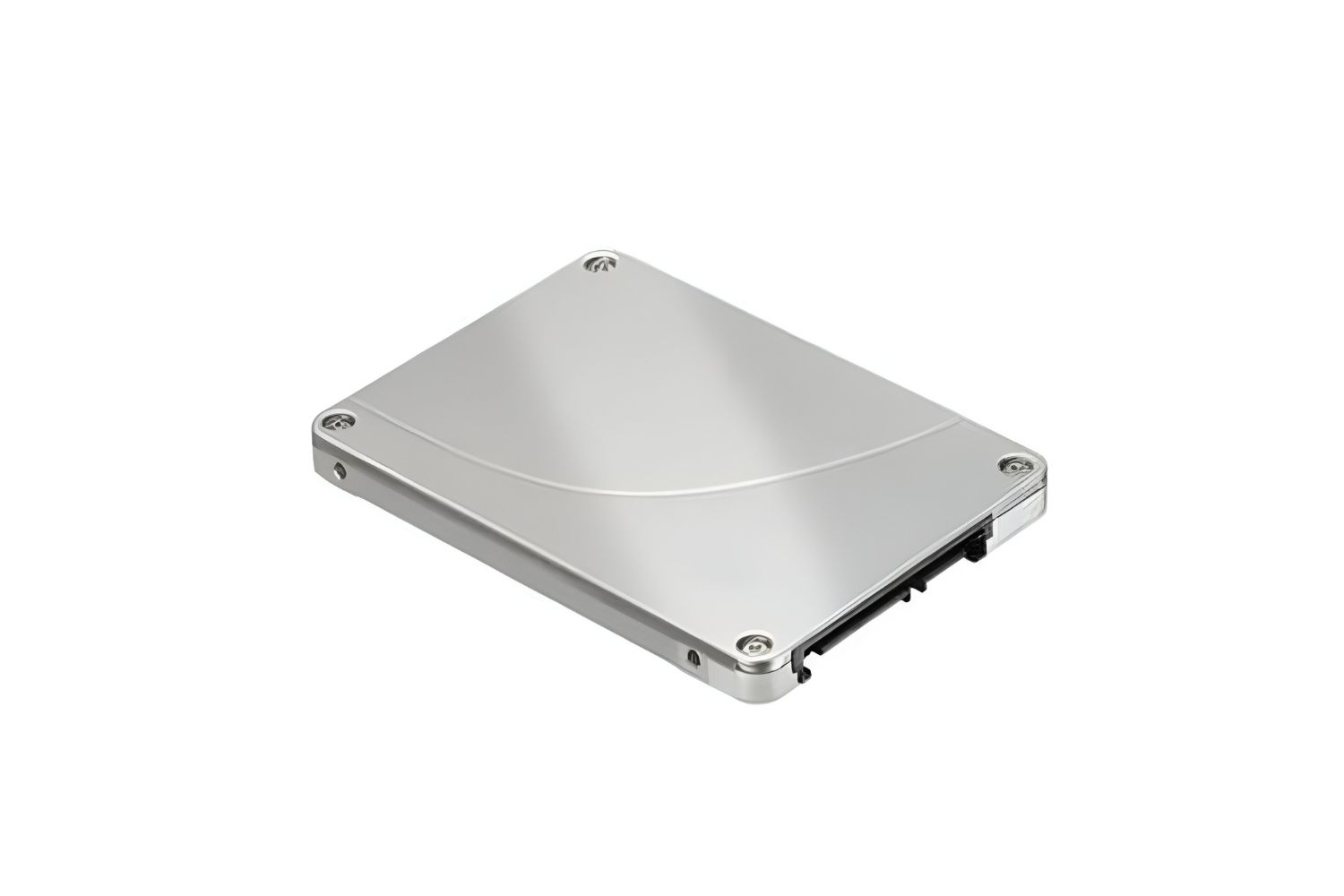Introduction
Welcome to the world of solid-state drives (SSDs), where lightning-fast performance and reliable storage capabilities are just the beginning. In this digital age, where data is king, the importance of choosing the right storage solution cannot be overlooked. Whether you’re a tech enthusiast, a professional content creator, or an ordinary user looking to boost your computer’s performance, understanding what an SSD is and how it can benefit you is crucial.
An SSD, or solid-state drive, is a type of storage device that has taken the tech industry by storm. Unlike traditional hard disk drives (HDDs) that rely on spinning magnetic platters and mechanical components, SSDs use flash memory chips to store data. This fundamental difference in technology has revolutionized data storage and retrieval, resulting in faster boot times, improved system responsiveness, and enhanced overall performance.
But how exactly does an SSD work? By utilizing NAND flash memory, an SSD stores data electronically, making it significantly faster and more reliable than an HDD. This flash memory technology allows for rapid data access, reduced latency, and increased durability. Compared to HDDs, which have to physically seek and retrieve data from rotating disks, SSDs can access data almost instantaneously.
The benefits of using an SSD are far-reaching. Firstly, and most noticeably, SSDs provide faster data transfer speeds. This means that tasks such as booting up your computer, launching applications, and copying files will be completed in a blink of an eye. Additionally, SSDs have no moving parts, making them more resistant to physical shock and less prone to failure.
Moreover, SSDs are quieter, lighter, and consume less power than their HDD counterparts. These factors are especially important for users on the go who need longer battery life and a more portable device. Furthermore, with increased efficiency, SSDs can prolong the lifespan of a laptop battery, allowing for more productivity.
In the following sections of this article, we will delve deeper into the working principles of SSDs, the differences between SSDs and HDDs, the various types of SSDs available in the market, and how to choose the right one for your needs. We will also provide valuable tips for optimizing SSD performance and debunk common misconceptions about SSDs.
So, whether you’re a computer enthusiast looking to upgrade your system or a casual user seeking faster speeds and improved reliability, understanding the world of SSDs is vital. Let’s embark on this journey to uncover the remarkable capabilities of solid-state drives.
What is an SSD?
An SSD, or solid-state drive, is a type of non-volatile storage device that has become increasingly popular in recent years. It offers a revolutionary alternative to traditional hard disk drives (HDDs), which have been the standard method of storage for decades.
Unlike HDDs that rely on spinning magnetic platters and mechanical components to read and write data, SSDs use NAND flash memory chips. These chips store data electronically, resulting in faster access times and improved overall performance. The absence of moving parts in SSDs eliminates the need for mechanical processes, making them more durable and less prone to failure.
SSDs are designed to connect directly to your computer’s motherboard using various interfaces such as SATA (Serial ATA) or NVMe (Non-Volatile Memory Express). This allows for high-speed data transfer between the drive and the system, significantly improving the speed at which your computer can read and write data.
One of the key characteristics of SSDs is their speed. Unlike HDDs that need to physically locate data on rotating disks, SSDs can access information almost instantaneously. This results in quicker startup times, faster application launches, and shorter file transfer durations. With an SSD, you can experience a noticeable boost in overall system performance.
In addition to speed, SSDs offer several other advantages. They are resistant to physical shock and vibrations since they do not have any moving parts. This makes them an ideal storage solution for laptops, particularly for users who frequently travel or work in environments where bumps and jolts are common.
Another advantage of SSDs is their energy efficiency. Since they do not require power to rotate disks, SSDs consume less power compared to HDDs. This can contribute to longer battery life for laptops, making them an appealing choice for mobile users.
Furthermore, the compact and lightweight design of SSDs makes them easy to install in various devices, including laptops, desktops, and even gaming consoles. Their small form factor allows for flexibility in designing sleek and space-efficient devices.
Overall, SSDs offer a superior storage solution with faster speeds, improved durability, energy efficiency, and compact design. As technology continues to evolve, SSDs are becoming more affordable and accessible to a wider audience. In the next section, we will explore how exactly SSDs work and the underlying technology behind their impressive performance.
How does an SSD work?
Understanding how an SSD works requires a closer look at the technology behind it. At the heart of every SSD lies NAND flash memory, a type of non-volatile storage that retains data even when power is disconnected. Unlike volatile memory like RAM, which loses data once the power is turned off, NAND flash memory allows for persistent storage.
NAND flash memory is made up of cells, which in turn, are composed of floating-gate transistors. These transistors store bits of data by trapping electrical charges within their floating gates. The presence or absence of these charges represents either a binary “1” or “0,” forming the basis of digital data storage.
When data needs to be written to an SSD, an electrical charge is sent to the appropriate cells, altering the charge state of the floating gates. This process, known as programming, enables the SSD to store the data. On the other hand, when data needs to be read, the SSD measures the presence or absence of charges in the cells, retrieving the stored data accordingly.
To access and organize the data stored in the NAND flash memory, SSDs utilize a controller. The controller acts as the brains of the SSD, managing data flows, optimizing performance, and handling error correction and wear-leveling algorithms.
Wear-leveling is a critical aspect of SSDs, as it helps distribute data writes evenly across the NAND flash cells. This prevents frequent writes to the same cells, which can cause them to wear out faster. By spreading data writes across multiple cells, wear-leveling helps prolong the lifespan of the SSD.
Another key feature of SSDs is trim support. Trim is a command that allows an operating system to inform the SSD controller which blocks of data are no longer in use. The controller then marks these blocks as available for future data writes, which improves SSD performance and extends its lifespan.
One significant drawback of NAND flash memory is that it has a limited number of write cycles. Each cell has a specific lifespan known as program/erase (P/E) cycles. However, modern SSDs use various techniques like wear-leveling, error correction codes, and sophisticated algorithms to evenly distribute writes and prolong the overall lifespan of the drive.
Overall, the combination of NAND flash memory and a high-performance controller enables SSDs to provide faster access times and data transfer rates compared to traditional hard drives. While individual SSDs may differ in performance and features, the underlying technology remains the same, allowing for reliable and efficient data storage.
Benefits of using an SSD
Using a solid-state drive (SSD) offers numerous advantages over traditional hard disk drives (HDDs). From faster performance to enhanced reliability, SSDs have revolutionized the way we store and access data. Let’s explore some of the key benefits of using an SSD.
1. Speed: SSDs are significantly faster than HDDs when it comes to accessing and transferring data. With no moving parts or spinning disks, SSDs can read and write data at lightning-fast speeds, resulting in quicker boot times, faster application launches, and improved overall system responsiveness. Whether you’re a gamer, a content creator, or a professional in any field, the speed benefits of an SSD can greatly enhance your productivity.
2. Reliability: SSDs outshine HDDs in terms of reliability. Since SSDs have no moving parts, they are less susceptible to mechanical failures, such as disk fragmentation or head crashes, which are common issues with HDDs. This makes SSDs ideal for portable devices, as they are more resistant to physical shock and vibrations that can potentially damage the drive.
3. Durability: The durability of an SSD is another advantage. HDDs can be sensitive to physical impacts, and even the smallest jolt can cause damage to the drive or result in data loss. In contrast, SSDs can withstand physical shocks and vibrations better, making them a reliable choice for users who are always on the move or work in rugged environments.
4. Energy Efficiency: SSDs consume significantly less power than HDDs. Since SSDs do not rely on the spinning of disks or the movement of read/write heads, they require less energy to operate. This energy efficiency translates into longer battery life for laptops and other portable devices, allowing you to use your device for extended periods without needing to recharge frequently.
5. Silent Performance: HDDs can generate noticeable noise due to the spinning of their disks and the movement of mechanical parts. In contrast, SSDs are completely silent as they have no moving parts. This not only contributes to a quieter computing experience but also reduces distractions in environments where silence is crucial, such as recording studios or offices.
6. Compact and Lightweight: SSDs are designed to be compact and lightweight, making them highly suitable for portable devices. Their smaller size and lighter weight allow for more flexibility in designing slim and sleek laptops, ultrabooks, and tablets. Whether you’re a frequent traveler or simply prefer a lightweight device, an SSD can provide the storage you need without compromising portability.
These are just a few of the many benefits of using an SSD. From faster speeds and improved reliability to energy efficiency and silent operation, SSDs offer a superior storage solution for both personal and professional use. Their increasing affordability and availability make them a worthwhile investment to enhance the performance of your computer system. In the next section, we will explore the differences between SSDs and HDDs in more detail.
SSD vs HDD: Understanding the Difference
When it comes to storage options, choosing between a solid-state drive (SSD) and a hard disk drive (HDD) is a crucial decision. While both serve the purpose of storing data, there are significant differences that set them apart. Let’s examine the key distinctions between SSDs and HDDs.
Technology: The fundamental difference between SSDs and HDDs lies in their technology. HDDs utilize spinning magnetic platters and mechanical moving parts to read and write data, while SSDs use NAND flash memory chips to store data electronically. This difference in technology translates to contrasting performance and characteristics.
Speed: SSDs are significantly faster than HDDs. The absence of moving parts in SSDs allows for near-instantaneous access to data, leading to faster boots, quicker application launches, and shorter file transfer times. On the other hand, HDDs are limited by the mechanical process of seeking and accessing data on spinning disks, resulting in slower performance overall.
Reliability: SSDs offer improved reliability over HDDs due to their lack of moving parts. HDDs are prone to mechanical failures, such as disk fragmentation, head crashes, or motor failure. In contrast, SSDs are more durable and less susceptible to physical damage, making them a more reliable option for storing important data.
Durability: HDDs are sensitive to physical impacts, as their spinning disks and moving parts can be easily damaged by shocks or vibrations. SSDs, on the other hand, can tolerate physical impacts better due to their solid-state construction. This durability makes SSDs more suitable for portable devices and environments where physical shock is a concern.
Energy Efficiency: SSDs consume less power compared to HDDs. Since SSDs lack spinning disks and moving parts, they require less energy to operate. This energy efficiency can result in longer battery life for laptops and other portable devices, providing users with extended usage without the need for frequent recharging.
Noise: HDDs produce noticeable noise due to the spinning of their disks and the movement of mechanical parts. SSDs, on the other hand, are completely silent as they have no moving parts. This makes SSDs the preferred choice for users who require a quiet computing environment or work in noise-sensitive settings.
Capacity and Cost: HDDs typically offer larger storage capacities at a lower cost per gigabyte. This makes HDDs a more economical choice for users who require extensive storage space within a budget. On the other hand, while SSDs have higher price points per gigabyte, the prices have been steadily declining, making them more affordable and accessible for general users.
Form Factor: HDDs are available in larger form factors, typically 3.5-inch or 2.5-inch sizes, making them more suitable for desktop computers. SSDs, on the other hand, come in smaller form factors, enabling them to fit into a wider range of devices, including laptops, ultrabooks, tablets, and even compact desktops.
Understanding the differences between SSDs and HDDs allows you to make an informed decision based on your specific needs. If you prioritize speed, reliability, durability, energy efficiency, and silent operation, SSDs are the way to go. If higher storage capacities and lower costs are more important, HDDs may be a better fit. Ultimately, it’s essential to assess your requirements and budget to determine which storage drive best suits your needs.
Types of SSDs Available in the Market
As the popularity of solid-state drives (SSDs) continues to grow, manufacturers have introduced various types of SSDs to cater to different user needs and preferences. Let’s explore the different types of SSDs available in the market today.
SATA SSDs: SATA (Serial ATA) SSDs are the most common type available. These SSDs are designed to connect to the computer’s motherboard using a SATA interface, similar to traditional hard disk drives (HDDs). SATA SSDs offer significant performance improvements over HDDs while maintaining compatibility with existing systems. They are available in 2.5-inch and M.2 form factors and provide reliable and affordable storage solutions for desktops and laptops.
NVMe SSDs: NVMe (Non-Volatile Memory Express) SSDs are the next generation of SSDs that use the NVMe interface. This interface allows for faster data transfer rates and reduced latency compared to SATA SSDs. NVMe SSDs are designed to maximize the performance of high-end systems, such as gaming computers and workstations, which can take full advantage of the increased speed provided by NVMe technology. They are available in M.2 and PCIe expansion card form factors.
PCIe SSDs: PCIe (Peripheral Component Interconnect Express) SSDs connect to the computer’s motherboard through the PCIe interface. These SSDs offer even higher performance than SATA and NVMe SSDs. PCIe SSDs use multiple PCIe lanes to provide faster data transfer speeds, making them ideal for demanding applications that require massive amounts of data processing, such as video editing or professional content creation. They are available in various form factors, including add-in cards and U.2 drives.
External SSDs: External SSDs are portable storage devices that connect to a computer via USB or Thunderbolt interfaces. These SSDs offer the benefit of high-speed storage in a compact and portable form. External SSDs are an excellent choice for users who need to transfer and store large amounts of data quickly, such as photographers, videographers, and professionals on the go.
Enterprise SSDs: Enterprise SSDs are designed for use in data centers and enterprise environments, where performance, reliability, and endurance are paramount. These SSDs often feature advanced technologies, such as power loss protection and high endurance NAND flash, to ensure data integrity and long-term reliability under heavy workloads.
Consumer vs. Prosumer SSDs: SSDs designed for consumer use typically offer a balance between performance and affordability. They are suitable for everyday computing tasks, gaming, and multimedia applications. Prosumer SSDs, on the other hand, are targeted towards professional users who require faster speeds, higher endurance, and advanced features such as hardware encryption and over-provisioning for better performance and reliability.
When considering which type of SSD to choose, it’s essential to assess your specific requirements, including desired performance, capacity, and budget. Each type of SSD offers unique advantages and is tailored for different use cases. Whether you’re a casual user, a power user, or a professional, there is an SSD available in the market that will meet your needs and elevate your computing experience.
Choosing the Right SSD for Your Needs
With the wide range of options available, choosing the right solid-state drive (SSD) for your needs can seem like a daunting task. However, by considering a few key factors, you can make an informed decision that meets your requirements. Here are some important points to consider when selecting an SSD:
Performance: Assess your performance needs to determine the level of speed and responsiveness required. If you need fast data transfer speeds and rapid application launches, consider NVMe or PCIe SSDs. For general computing tasks, SATA SSDs provide a significant improvement over traditional hard disk drives (HDDs).
Capacity: Determine the amount of storage capacity you require. SSDs are available in a range of capacities, from a few hundred gigabytes to several terabytes. Consider your storage needs, including the size of your operating system, applications, and files, to choose a capacity that accommodates your data requirements.
Budget: Set a budget for your SSD purchase. SSDs generally have a higher cost per gigabyte compared to HDDs, but the prices have become more affordable over time. Consider the balance between storage capacity and performance when determining your budget.
Form Factor: Consider the form factor that is compatible with your system. SSDs are available in 2.5-inch, M.2, and PCIe expansion card formats. Check the specifications of your computer or motherboard to ensure compatibility. M.2 SSDs, in particular, offer a compact and space-saving solution for thin and lightweight devices.
Endurance and Reliability: Evaluate the endurance and reliability requirements for your use case. Look for SSDs with features like wear-leveling, error correction codes, and power loss protection to ensure data integrity and drive longevity, especially for intensive workloads or professional applications.
Brand and Warranty: Consider the reputation and customer reviews of SSD brands. Established brands often provide better customer support and warranty coverage. Look for SSDs with a sufficient warranty period to protect your investment.
Power Efficiency: If energy efficiency and longer battery life are important to you, choose an SSD that consumes minimal power. This is particularly relevant for laptops and other portable devices.
Real-World Performance: Look for independent reviews or benchmark tests that evaluate the real-world performance of SSDs. These tests can provide insights into the actual performance and user experience, helping you make an informed decision.
Considering these factors and weighing your specific requirements will guide you towards choosing the right SSD that aligns with your needs and budget. Remember to prioritize the aspects that are most essential to your use case, whether it’s speed, capacity, reliability, or affordability.
By understanding your requirements and conducting thorough research, you can confidently select an SSD that will enhance your computing experience, provide faster storage performance, and meet your storage needs for years to come.
Tips for Optimizing SSD Performance
While solid-state drives (SSDs) offer impressive performance right out of the box, there are several steps you can take to optimize their performance and ensure they continue to operate at peak efficiency. Here are some tips to help you make the most out of your SSD:
1. Enable TRIM: TRIM is a command that helps maintain the performance and lifespan of an SSD by allowing the operating system to inform the drive which blocks of data are no longer in use. Enabling TRIM helps the SSD efficiently manage and organize its stored data, resulting in sustained performance over time.
2. Keep the firmware up to date: Manufacturers periodically release firmware updates for SSDs, which can improve performance, fix bugs, and enhance compatibility. Check the manufacturer’s website regularly for firmware updates and install them as recommended.
3. Don’t fill the drive to capacity: SSDs perform best when they have sufficient free space. Aim to keep at least 10-20% of the drive’s capacity free for optimal performance. This allows the SSD to have ample space for garbage collection and wear-leveling algorithms to operate effectively.
4. Avoid frequent full drive defragmentation: Unlike traditional hard disk drives (HDDs), SSDs don’t benefit from regular defragmentation. In fact, excessive defragmentation can increase wear on the drive without significant performance gains. Most modern operating systems detect SSDs and disable defragmentation by default.
5. Disable hibernation and unnecessary indexing: Disabling hibernation can help save disk space and reduce unnecessary writes to the SSD, improving both performance and overall lifespan. Additionally, consider selectively disabling indexing for certain folders or files that are not regularly accessed to reduce background read/write activity.
6. Adjust power settings: Configure your power settings to prioritize performance over power saving when using an SSD. By maintaining a higher power profile, you can ensure the SSD is operating at its maximum capacity and delivering optimal performance.
7. Use high-performance storage drivers: Check if your SSD manufacturer provides specific storage drivers for your operating system. These drivers are often optimized for SSD performance and can provide better responsiveness than generic drivers.
8. Regularly update your operating system and drivers: Keeping your operating system and device drivers up to date helps ensure compatibility and can provide performance improvements or bug fixes specific to your SSD.
9. Protect against power loss: Consider using an uninterruptible power supply (UPS) or enabling power loss protection features if available. Power loss during write operations can potentially lead to data corruption or drive failure, so taking precautions to mitigate this risk is crucial.
10. Regularly backup your data: While SSDs are generally reliable, data loss can still occur due to unexpected failures or accidents. Regularly backing up your data to an external drive or cloud storage is essential to protect your important files and ensure peace of mind.
By following these tips, you can optimize the performance and longevity of your SSD. Implementing these best practices will help you make the most of your investment and enjoy the benefits of fast and reliable storage for years to come.
Common Misconceptions about SSDs
Solid-state drives (SSDs) have gained significant popularity in recent years, but with their rise in prominence, several misconceptions have emerged. It’s essential to debunk these misconceptions and gain a clear understanding of the realities of using SSDs. Here are some common misconceptions about SSDs:
1. Limited Lifespan: One of the most prevalent misconceptions is that SSDs have a limited lifespan. While it’s true that SSDs have a finite number of program/erase cycles, modern SSDs have high endurance ratings. In practical terms, this means that for most users, an SSD’s lifespan will far exceed the typical lifespan of a computer.
2. Constant Need for Overprovisioning: Overprovisioning is the practice of leaving a portion of an SSD unallocated to ensure optimal performance and longevity. While overprovisioning can be beneficial, it’s not necessary for everyday users. SSDs are designed with built-in technologies, such as wear-leveling algorithms, to evenly distribute writes and maintain performance without manual overprovisioning.
3. Incompatibility with RAID: Some people believe that SSDs are not compatible with RAID (redundant array of independent disks) configurations. This is not true. SSDs can be used in RAID setups, providing enhanced performance, data redundancy, and improved reliability, just like traditional hard disk drives (HDDs).
4. Loss of Data in Power Outages: While power outages can potentially lead to data loss on traditional HDDs, modern SSDs incorporate power loss protection mechanisms. These mechanisms help safeguard data in the event of a power outage, ensuring that any data in transit or waiting to be written is safely stored or flushed to disk when power is restored.
5. Need for Frequent Maintenance: Unlike HDDs that can benefit from regular defragmentation, SSDs do not require frequent maintenance. In fact, unnecessary defragmentation can cause unnecessary wear on the SSD and provide minimal performance gains. Modern operating systems recognize SSDs and handle optimization automatically.
6. No Need for Backup: Some individuals wrongly assume that SSDs do not require regular backups. While SSDs are generally reliable, they are still susceptible to failures, data corruption, and accidental deletion. It’s crucial to maintain regular backups of your important data to protect against potential loss.
7. Poor Reliability and Durability: In the past, early SSD models were less reliable and had limited durability compared to HDDs. However, with advancements in technology, modern SSDs have become highly reliable and offer excellent durability. They are built with features like error correction codes, wear-leveling algorithms, and power loss protection to ensure data integrity and longevity.
8. Unsuitable for Gaming: There is a misconception that SSDs do not improve gaming performance significantly. While SSDs may not directly impact frame rates in games, they offer much faster load times, resulting in reduced loading screens and faster level transitions. This enhances the overall gaming experience, allowing gamers to spend more time playing and less time waiting.
9. Limited Compatibility: SSDs are designed to be compatible with various systems and interfaces. Whether it’s a SATA connection or an M.2 slot, SSDs can be easily integrated into most modern computers and laptops. However, it’s always important to check the compatibility of the SSD with your specific system before making a purchase.
10. Always Faster than HDDs: While SSDs provide significant performance improvements over HDDs, it’s important to note that not all SSDs are created equal. There is a wide range of SSD models available, and their performance may vary based on factors such as the type of NAND flash memory used and the controller technology employed. Therefore, it’s crucial to carefully evaluate the specifications and performance capabilities of an SSD before making a purchasing decision.
By dispelling these misconceptions, users can make informed decisions when it comes to adopting SSDs. Understanding the realities of using SSDs will help users fully benefit from their inherent advantages, such as increased speed, improved reliability, and enhanced overall system performance.
Conclusion
Solid-state drives (SSDs) have revolutionized the storage industry, offering faster speeds, improved reliability, and enhanced performance compared to traditional hard disk drives (HDDs). By understanding what an SSD is, how it works, and its benefits, users can make informed decisions when it comes to selecting the right SSD for their needs.
SSDs utilize NAND flash memory technology, which allows for rapid data access without the need for moving parts. This results in faster boot times, shorter application launch durations, and improved overall system responsiveness. Additionally, SSDs are more reliable and durable than HDDs, making them less prone to physical damage and failure.
It’s important to consider different factors when choosing an SSD, including performance needs, storage capacity requirements, budget, and form factor compatibility. Whether it’s a SATA SSD for general computing tasks, an NVMe or PCIe SSD for high-performance needs, or an external SSD for portable storage, there is an SSD available to cater to diverse user preferences.
Optimizing SSD performance involves practices such as enabling TRIM, keeping the firmware up to date, avoiding drive capacity saturation, and adjusting power settings to prioritize performance. While SSDs offer many benefits, it’s crucial to dispel common misconceptions such as limited lifespan, the need for frequent maintenance, and poor compatibility.
In conclusion, SSDs are a worthwhile investment, providing users with faster speeds, enhanced reliability, improved energy efficiency, and compact design. As SSD technology continues to advance, prices are becoming more affordable, making them accessible to a wider range of users. By embracing SSDs, individuals can elevate their computing experience, whether for work, entertainment, or creative pursuits.







